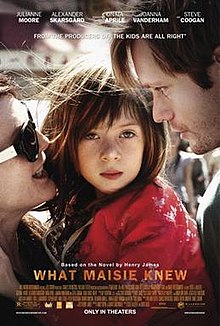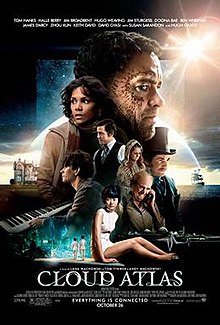In 2012,
Queen Elizabeth II celebrated her diamond jubilee;
Dressed as the Joker, James Holmes opened fire on a crowd during a screening of The Dark Knight Rises;
The Summer Olympics were held in London;
Curiosity landed on Mars;
The Innocence of Muslims prompted protests around the globe;
Felix Baumgartner became the first person to break the sound barrier without machine assistance;
Hurricane Sandy made landfall in the US;
Barack Obama was reelected president of the United States;
Adam Lanza killed twenty eight at Sandy Hook Elementary’;
The Simpsons became the first scripted television television series to reach 500 episodes;
Blue Ivy Carter was born;
While Etta James, Angelo Dundee, Ben Gazzara, Whitney Houston, David Kelly, Davy Jones, Andrew Breitbart, Robert Sherman, Adrienne Rich, Mike Wallace, Dick Clark, Levon Helm, Charles Colson, Junior Seau, George Lindsey, Maurice Sendak, Vidal Sassoon, Carroll Shelby, Donna Summer, Robin Gibb, Richard Dawson, Kathryn Joosten, Ray Bradbury, Bob Welch, Rodney King, Nora Ephron, Andy Griffith, Ernest Borgnine, Richard D. Zanuck, Celeste Holm, Sally Ride, Sherman Helmsley, Gore Vidal, Chris Marker, Marvin Hamlisch, William Windom, Tony Scott, Phyllis Diller, Neil Armstrong, Michael Clarke Duncan, Sun Myung Moon, Andy Williams, Herbert Lom, Alex Karras, Arlen Specter, George McGovern, Larry Hagman, Dave Brubeck, Daniel Inouye, Charles Durning, Jack Klugman, Harry Carey Jr., and Norman Schwazrkopf Jr. died.
The following is a list of my ten favorite films released in 2012:

10. Stories We Tell
Sarah Polley’s directorial work focuses on fractured relationships. Away from Her (2006) shows the effects of Alzheimer’s on a long-term commitment, Take This Waltz (2011) is about a young couple who experience a crisis, and her third feature film explores the brokenness in her own family.
Twenty years after her mother died, Polley discovered she was the child of an affair her mother had while acting in a play in Montreal.
Through interviews with the man she grew up thinking was her father, her siblings, her mother’s friends, and her biological father, Polley chronicles the effect this long-buried secret had on her family.
It’s a fascinating and painfully honest exploration of why we deceive the ones we love, how we try to protect them from the truth, and the ways we lie to ourselves to justify our actions.
Everyone involved has a slightly different idea of what happened and what it means, suggesting our family and the relationships we have with them is an extension of the personal narrative we’ve created for our lives.
Two humanitarian workers traveling through the African countryside are stopped by a cadre of child soldiers.
After a tense standoff, one of the workers and their guide are killed. Most of the children are murdered except for Kaney who survives and lives to tell his tale.
It’s a powerful reminder of the difference we can make if we try: the risks involved, the sacrifices required, and the powerful connections made in random, fleeting moments.

8. Museum Hours
Anne (Canadian singer Mary Margaret O’Hara, the less famous sister of comedian Catherine O’Hara) travels to Vienna to visit a sick cousin. She doesn’t know anyone and doesn’t speak the language. Fortunately, she discovers the Kunsthistorisches Museum, and befriends Johan, a security guard.
A cross between Art History 101 and My Dinner with Andre (1981), this film documents their conversations about life, death, aging, and art. If you care about art and enjoy discussing it, this movie is a must see.

Based on a Henry James short story, this film beautifully captures the way divorce and the breakdown of a family affects those most dependent on the family structure for support: children.
Julianne Moore and Steve Coogan play narcissistic individuals who don’t love each and don’t care for their daughter, Masie. They see her solely as leverage during their divorce.
Luckily for Maisie, she finds a loving home in the ex partners of her parents.
This pro family film explores how harmful divorce and the constant pursuit of one’s own happiness is to children.
It’s a sobering reality check, made even more so as one gets older and sees the impact your own choices have on your kids.

Inspired by the true story of the Belón family during the 2004 Indian Ocean earthquake and tsunami, this is an incredibly harrowing film, and the palpable fear of death is emotionally draining.
However, it’s ultimately an uplifting story about love and sacrifice for your fellow man when there is no personal benefit.
Naomi Watts is incredible, Ewan Mcgregor is good, and Tom Holland gives us a preview of his incredible talent.

5. The Broken Circle Breakdown
Bonding over their shared love of bluegrass music, Dilder and Elise fall in love and have a child. They live an idyllic existence of familial love and musical collaboration until their young daughter dies of cancer.
The pair struggle to accept her death. Their grieving is not mutually supportive and they drift apart until the rift between them becomes an insurmountable chasm.
Dilder turns to science as the ultimate truth, while Elise seeks spiritual enlightenment to spirituality to fill the gaping maw in her soul.
This heartbreaking film about an unthinkable tragedy compellingly dramatizes the difference between approaches to answering the difficult question of human suffering.

4. The Avengers
A decade on and we’re beginning to understand what a monumental achievement this was, the unprecedented culmination of a four year experiment, and the beginning of a shift in the way Hollywood does business.
The Marvel Cinematic Universe was born with Iron Man, but came of age here.
It’s best thought of as a super sized television show releasing a new episode every four months.
Post Avengers, producer Kevin Feige has emerged as a preeminent visionary, but with this movie it was still largely in doubt who would be the guiding light, and director Joss Whedon was a popular bet. Ten years later his participation seems more of a hindrance, or at best an interesting footnote, than a pivotal part of its success.
One decade in, this movie is eminently rewatchable.

Somehow a musical about French historical issues, rooted in American ideals of freedom and forgiveness has become a cultural touchstone.
The cast in this film adaptation is wonderful: Hugh Jackman, Anne Hathaway (in an Oscar winning role). Sacha Baron Cohen and Helena Bonham Carter chewing scenery. Eddie Redmayne. Amanda Seyfried. The weakest point of the film is undoubtedly Russell Crowe’s Javert. Although he brings his best effort, his singing is not up to the challenge.
The movie graciously created space for previous cast members of the theatrical production.
The original Broadway production was a Gen-X Hamilton, penetrating deep into pop culture consciousness.
Within a decade, Tom Hooper directed film versions of the defining Broadway musicals of the 1980s: this and Cats.
While Cats was not nearly as successful (although I enjoyed it), this movie, hit all the right notes.

2. Cloud Atlas
It’s a sprawling epic, set across six different eras, with the same actors playing different parts in each, interconnected via a piece of music and a love affair.
There are two sections set in the future. The first in New Seoul involves androids wanting a better life, the second is on a barely habitable earth which has reverted to a primitive existence.
It’s not a popcorn movie. It’s a difficult film, which challenges our perceptions of some of our most beloved performers.
Hugh Grant stretches into dramatic territory and admirable acquits himself. Villainous Tom Hanks is fascinating.
It’s unflinching in it’s vision: Love will find away. This movie is a beautiful affirmation of the lasting power of love and its ability to transcend human misery.
The Wachowskis and Tom Twyker should be extremely proud of the film they created, an unheralded masterpiece destined to grow in reputation in the years to come.

1. Beasts of the Southern Wild
Six year old Hushpuppy (Quvenzhané Wallis) lives with her father, Wink, in the Bathtub, a remote area of Louisiana, cut off from the rest of the world by a levee.
While the ill Wink is hospitalized, Hushpuppy fends for herself, but when a storm approaches, Hushpuppy and a returning Wink ride out the storm together in their dilapidated shelter. Afterwards, their jubilation at surviving is dashed as they realize the storm deposited a large amount of salt water in The Bathtub. In order to drain the dangerous water, they have to destroy the levee, removing the barrier separating their community from the rest of the world and destroying the area’s unique cultural identity.
After the catastrophe has passed, Wink succumbs to his illness and dies as Hushpuppy bravely listens to his last breath, then leads the community in burning his funeral pyre.
The Bathtub, impoverished and isolated, should be a dark and dreary place, but it’s not. Because of the indomitable spirit of people like Hushpuppy, it’s a wonderful place, full of life and vitality.
Benh Zeitlin’s beautiful film reminds us our attitude and our spirit is more than capable of vanquishing our foes and triumphing over whatever hardships this world has to offer, but we have to embrace evil as a natural part of life. As Hushpuppy reminds us “everybody loses the thing that made them. It’s even how it’s supposed to be in nature. The brave men stay and watch it happen, they don’t run.” To embrace the occurrence of evil it is to demistfy it, to accept it, to defeat it.
This modern fairytale is a vibrant and original portrait of a world which may soon disappear. As the world gets flatter, we will lose the valleys and the mountains, but maybe we won’t forget them. Hopefully, Hushpuppy was right and “in a million years, when kids go to school, they gonna know: Once there was a Hushpuppy and she lived with her daddy in the Bathtub.”
